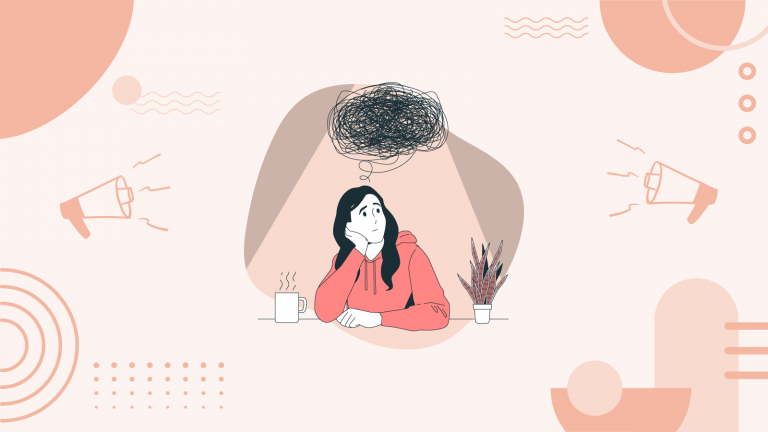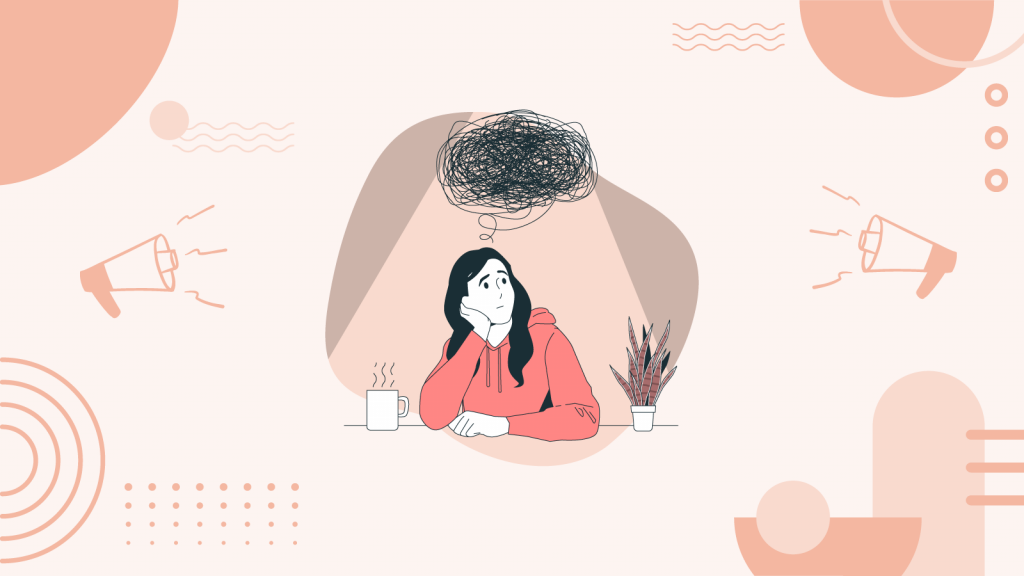“Heavy heart, the negativity surrounding; lost hope, only the days; it has been counting.”
A strong feeling of trauma haunts you even after several years of running away from it. This might have turned into something huge, affecting your life and mental health.
If you have been in this situation for a long time and have been suffering from prolonged stress and anxiety, then it is essential to address the actual issue and manage it properly with some practical strategies.
Let’s dive into understanding more details about post-traumatic stress disorder and how you can manage and treat it with proper care and attention.
What is Post-traumatic Stress Disorder?
Every time we hear the name PTSD, we become highly alert and prepare for the struggle ahead. Well! It is something to be afraid of as it gives you high levels of stress, depression, and anxiety.
Post-traumatic stress disorder occurs when your mind is struggling to process a traumatic event, which can cause you to have intense, disturbing thoughts and feelings for a long time after the event has ended. Most of the time, you might find yourself reliving the incident by having nightmares, flashbacks, or suffering from severe anxiety.
The condition of PTSD can lead you to an endless state of alertness, keeping you constantly on edge and expecting danger around every corner. This is a response of your brain toward any threat, trying to protect you. However, sometimes it leaves you feeling overwhelmed and disconnected from reality.
🎭 Fun Fact
Did you know? PTSD was first officially recognized as a mental health condition after World War I, when it was known as “shell shock.”
The Science Behind PTSD
With the consequences coming with PTSD, it has become essential to understand the science behind it in order to find the root cause and effective treatment procedures.
Certain neurological and physiological changes occur with PTSD, making its impact even more crucial. PTSD changes the way your brain functions, especially in areas like the amygdala, hippocampus, and prefrontal cortex. These regions are mainly responsible for processing emotions, making decisions, and storing memories.
If you are suffering from PTSD, your amygdala becomes overactive, which is responsible for heightening your response to perceived threats. The hippocampus helps to process and store memories, which may shrink and result in difficulty in distinguishing between past and present experiences (Journal of Affective Disorders, 2018).
According to some researchers, about 20% of people who experience a traumatic event will develop PTSD. This statistic makes it even more important to recognize the symptoms of PTSD and ways to treat it.
Quick Question: |
Identifying the Causes and Triggers of Your PTSD
It is important to identify the causes and triggers of your PTSD to manage it properly. In most cases, it is associated with severe trauma, such as military combat, assault, or a natural disaster.
Some of the other causes that can result in PTSD come from events such as the loss of a loved one, ongoing stress from an abusive relationship, or serious health problems.
There are several triggers that can be responsible for PTSD, such as becoming sensitive to specific sounds, smells, or sights of particular thoughts or feelings. When you come in contact with these triggers, your body starts reacting in a certain way, as if those traumatic events are happening all over again.
At this stage, it becomes even more essential to recognize these triggers and take proactive steps to manage your response and reduce its impact on living a healthy and peaceful life.
🎭 Activity |
How You Can Effectively Treat PTSD?
Do you occasionally experience this sudden rush of feeling full of anxiety, uneasiness, fear, and worry when triggered by certain incidents in your life?
Then you are surely suffering from PTSD, and it becomes crucial to treat your PTSD using some multifaceted process, including the combination of therapy, medication, and lifestyle changes.
One of the most effective treatments is Cognitive Behavioral Therapy (CBT), which will help you reframe negative thought patterns and create a healthier coping mechanism (The American Journal of Psychiatry, 2015).
Another powerful tool to help you with your PTSD is Eye Movement Desensitization and Reprocessing (EMDR), which gives you the benefit of processing and integrating traumatic memories with guided eye movements.
🎭 Fun Fact
Did you know? EMDR therapy, which uses guided eye movements to process trauma, was discovered accidentally by Dr. Francine Shapiro while she was walking in a park.
You can also go for some medications, such as selective serotonin reuptake inhibitors (SSRIs), which help you to engage in therapy and other recovery activities.
Some studies have shown that up to 70% of individuals undergoing CBT for PTSD experience significant improvement in their symptoms, which highlights the potential recovery provided with an accurate treatment plan.
#1: Types of Therapy to Consider
- Cognitive Behavioral Therapy (CBT)
CBT helps you to change your thoughts and behaviors, which is beneficial, especially in cases where your trigger points are memories and flashbacks from your traumatic events.
- EMDR (Eye Movement Desensitization and Reprocessing)
This therapy plays an important role when it comes to processing a traumatic memory and helping you recover from that with some specific eye moments.
- Exposure Therapy
Exposure therapy is excellent when it comes to confronting trauma in a controlled environment, giving you situations to face your fears and making you mentally strong.
Quick Question: |
Manage Your PTSD Symptoms with Self-Care Strategies
Understanding and recognizing the symptoms of PTSD is vital to preparing the most effective plans to treat and reduce it. There are several strategies and techniques that you can use to reduce the symptoms of PTSD, such as self-care strategies to enhance your ability to manage the symptoms and mentally prepare yourself.
One of the most powerful techniques is mindfulness and meditation (JAMA Psychiatry, 2019). These techniques can help you ground yourself in the present moment and tackle challenging situations with grace. You can also keep a meditation journal that can help you face your fears and reduce the intensity of flashbacks and anxiety.
Doing physical activities regularly is proven to be beneficial as it releases endorphins, which are great for reducing stress hormones in your body and keeping you physically and mentally healthy.
Another great way to manage the symptoms of PTSD is by maintaining a strong support system. You can spare some time from your busy lives to communicate with your friends, family, or support group, where you can trust people and share your life experiences. This practice not only helps you break the isolation created by PTSD but can also give you the sense that you are not alone in this journey.
👉 Pro Tip: |
#1: Effective Self-Care Practices
- Mindfulness Meditation
The best technique to keep you grounded and help you find mental peace is mindfulness meditation. You can include various methods such as deep breathing, relaxation, meditation, or yoga in your daily routine to keep your mind staring and focused.
- Regular Exercise
Incorporating regular exercise into your daily routine can elevate your mood and keep you away from the negative thoughts and memories that have been haunting you for a long time.
- Healthy Diet
Maintaining a healthy and balanced diet plays an important role in fueling your body and mind, helping you manage healthy overall well-being.
Alternative Therapies for Your PTSD
If you are already taking treatments for PTSD, it is important to add some traditional treatments to boost the process and provide you with better support in managing it.
Some of the alternative treatments include acupuncture, yoga, and art therapies, which provide support in releasing tension and expressing emotions that might have been difficult to verbalize. Incorporating these therapies can help your primary treatment plan, enhancing the power of healing.
According to some research, people who practice yoga and mindfulness techniques regularly report a 41% reduction in PTSD symptoms. If you include these alternative therapies in your daily routine, they can replace the conventional treatment and offer a better and long-term cure for your PTSD.
#1: Popular Alternative Therapies
- Yoga
Yoga is one of the finest practices to keep you physically and mentally healthy. It includes mindfulness meditation techniques to boost your mental health and thinking ability, giving a push to reduce the symptoms of PTSD (Journal of Traumatic Stress, 2014).
- Art Therapy
Art therapy plays an important role in calming your mind and distracting you from all the negative thoughts and anxiety. It can help you cope with trauma and shift your focus to other interactive activities.
- Acupuncture
One of the most traditional and effective methods to cope with your PTSD is acupuncture. It targets specific points in your body to relieve stress and anxiety.
Quick Question: |
Conclusion
It is not an easy thing to live with PTSD, and having its effects on your daily life can make you suffer with several triggering incidents. If you are constantly having these episodes, it is essential to keep yourself up and know that you have the power to take control of your healing process.
You can effectively cure your PTSD by understanding the disorder, identifying the triggers, and incorporating the treatments and self-care strategies. Another great way to reduce the effect of PTSD in your life can be by exploring alternative therapies.
It is important to understand that these techniques require your patience and efforts to bring your life closer to the place where you no longer are suffering from the trauma and living a happy and peaceful life.
“A relief from the dark fears, life taking new turns, positivity surrounding, with new hopes and curves.”
🎭 Activity:
Alternative Therapy Exploration:
Create a list of alternative therapies you’re curious about. Research each one, noting the benefits and what you might enjoy about them. Set a goal to try one new therapy within the next month and journal about your experience afterward.
References
- PTSD and Brain Changes: Studies show that PTSD can lead to reduced hippocampal volume, affecting memory and emotional regulation (Journal of Affective Disorders, 2018).
- CBT Effectiveness: Cognitive Behavioral Therapy (CBT) is proven to reduce PTSD symptoms in up to 70% of patients (The American Journal of Psychiatry, 2015).
- Mindfulness and PTSD: Mindfulness-based therapies can reduce PTSD symptoms by 23% on average (JAMA Psychiatry, 2019).
- Alternative Therapies: Yoga has been shown to decrease PTSD symptoms by 41% in veterans (Journal of Traumatic Stress, 2014).





















